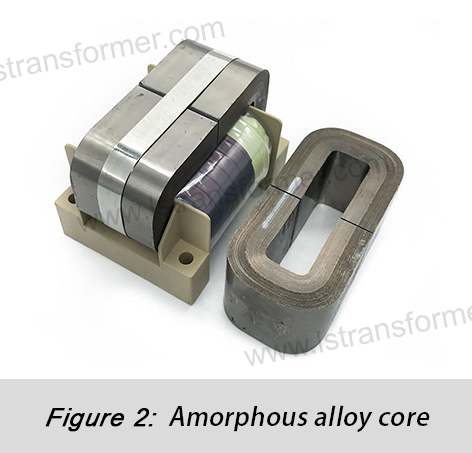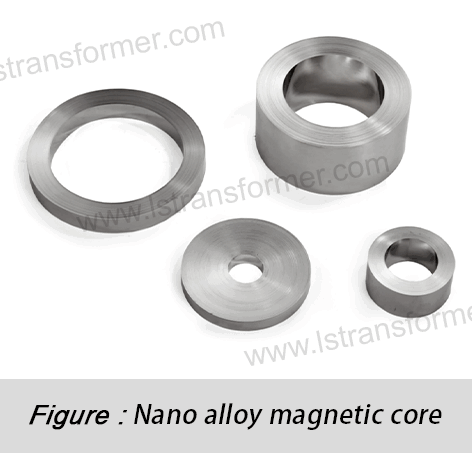L'évolution des matériaux du noyau des transformateurs : de l'acier au silicium aux alliages amorphes
L'évolution des matériaux du noyau des transformateurs : de l'acier au silicium aux alliages amorphes
Sous l'impulsion des objectifs mondiaux de transition énergétique et de neutralité carbone, l'innovation dans les matériaux de base des transformateurs est devenue essentielle à l'amélioration de l'efficacité énergétique. Cet article explore l'évolution de l'acier au silicium, de l'acier au silicium à grains orientés laminé à froid et des alliages amorphes, en abordant leur historique, leurs avantages et inconvénients en termes de performances, ainsi que leurs scénarios d'application.
1. Acier au silicium (1903–présent)
● Contexte historique :
Au début du XXe siècle, l'expansion des réseaux électriques a entraîné une forte demande de transformateurs performants. En 20, le métallurgiste britannique Robert Hadfield a inventé l'acier au silicium contenant 1903 à 3 % de silicium. En dopant les atomes de silicium, les propriétés électromagnétiques du fer pur ont été modifiées, ce qui en a fait le premier matériau de noyau industrialisé.
●Avantages :
L'ajout de silicium a augmenté la résistivité à 0.5 μΩ·m (contre 0.1 μΩ·m pour le fer pur). Cette résistivité plus élevée a considérablement supprimé l'effet des courants de Foucault, réduisant de 60 % les courants circulaires (courants de Foucault) dans les champs magnétiques alternatifs.
De plus, les atomes de silicium ont réduit la résistance au mouvement des parois du domaine magnétique, réduisant ainsi les pertes par hystérésis de 5-8 W/kg (fer pur) à 2-3 W/kg (à B = 1.5 T, 50 Hz). Le rendement initial du transformateur est ainsi passé de moins de 95 % à 97 %, devenant ainsi une technologie clé pour l'extension du réseau.
●Inconvénients :
Cependant, l'anisotropie magnétique de l'acier au silicium (variation de la perméabilité magnétique supérieure à 30 % dans différentes directions) a entraîné une densité de flux magnétique inégale dans le noyau, entraînant des points chauds localisés (différences de température allant jusqu'à 20 K) et un vieillissement accéléré de l'isolation. De plus, les tôles d'acier au silicium sont relativement épaisses (0.3 à 0.5 mm), ce qui nécessite des processus de laminage complexes et longs, entraînant des coûts de production plus élevés.
2. Acier au silicium à grains orientés laminé à froid (1958-présent)
● Contexte historique :
Dans les années 1950, l'explosion de la demande d'électricité a mis en évidence les limites d'efficacité de l'acier au silicium traditionnel. En 1958, Allegheny Technologies (États-Unis) a développé l'acier au silicium à grains orientés (CRGO) laminé à froid, utilisant le laminage à froid pour aligner les grains selon la direction de magnétisation facile (orientation cristalline), réalisant ainsi un bond en avant en termes de perméabilité.
●Avantages :
Le procédé de laminage à froid a permis une orientation des grains parfaitement alignée, réduisant ainsi la résistance au mouvement du domaine magnétique et augmentant la perméabilité de 50 %. Un revêtement isolant en phosphate-silicate (3-5 μm d'épaisseur) a encore réduit de 30 % les pertes par courants de Foucault interlaminaires. Les pertes dans le noyau (P1.5/50) sont passées de 3 W/kg (acier au silicium traditionnel) à 1.2 W/kg, réduisant ainsi les pertes à vide de 40 %.
Selon les statistiques de l'IEEE, le CRGO a augmenté l'efficacité des transformateurs de distribution au-delà de 99 %, réduisant ainsi les émissions mondiales de carbone de 120 millions de tonnes par an.
●Inconvénients :
La transformation du CRGO nécessite un équipement de découpe de précision, et les bavures induites par le cisaillement (> 20 μm) peuvent provoquer des décharges partielles, augmentant ainsi les risques de rupture d'isolant. De plus, son coût est 30 % supérieur à celui de l'acier au silicium laminé à chaud, ce qui limite son adoption sur les marchés à bas coûts.
3. Alliages amorphes (1976–présent)
● Contexte historique :
En 1976, AlliedSignal (États-Unis) a produit en masse des alliages amorphes à base de fer (Fe80B10Si10) grâce à une technologie de solidification rapide (vitesse de refroidissement : 10⁶°C/s). Sa structure atomique désordonnée a dépassé les limites de performance électromagnétique des matériaux cristallins traditionnels.
●Avantages :
La structure amorphe élimine la résistance des joints de grains aux mouvements du domaine magnétique, réduisant ainsi les pertes par hystérésis à 1/4 de celles de l'acier au silicium (P1.3/50 ≈ 0.2 W/kg). Leur résistivité élevée (1.3 μΩ·m) réduit les pertes par courants de Foucault de 80 % par rapport à l'acier au silicium. Les transformateurs en alliage amorphe réduisent les pertes à vide de 70 %, permettant ainsi d'économiser 1,500 500 kWh par an (pour un transformateur de 99.5 kVA). Le Département de l'Énergie des États-Unis les classe comme étant à « ultra-haut rendement » (≥ XNUMX %).
●Inconvénients :
Les rubans d'alliage amorphe sont extrêmement fins (25 μm) et mécaniquement cassants, ce qui entraîne des fractures lors de la transformation (rendement : 70 %-80 %). Leur coût initial est deux à trois fois supérieur à celui de l'acier au silicium, et leur recyclage est difficile (nécessitant une refusion à haute température, augmentant la consommation d'énergie de 2 %).
● Applications :
Transformateurs de distribution (imposés par la directive européenne sur l'écoconception).
Filtrage à haute efficacité dans les onduleurs photovoltaïques et les convertisseurs éoliens.
● Mesures d’optimisation :
(1)Conceptions composites :Le revêtement de rubans amorphes avec des couches de résine époxy et de fibre de verre (0.1 mm d'épaisseur) augmente la résistance à la flexion de 0.1 %, résolvant ainsi la fragilité.
(2)La coulée continue à deux cylindres augmente la vitesse de production de 20 m/min à 100 m/min, réduisant ainsi les coûts à 1.5 fois ceux de l'acier au silicium.
4. Matériaux du futur : alliages nanocristallins et acier au silicium à très faibles pertes
Après 2010, l'entreprise japonaise TDK a développé des alliages nanocristallins (Fe-Si-B-Cu-Nb) présentant des pertes dans le noyau de seulement 0.1 W/kg (1.5 T à 50 Hz) et une perméabilité supérieure à 10,000 1 à 5,000 MHz (contre 500 5 pour les alliages amorphes). Un recuit précis (20 °C ± 10 °C) permet de contrôler la taille des grains en dessous de 10 nm, empêchant ainsi la dégradation magnétique. Cependant, la production nécessite un vide ultra-élevé (< 5⁻⁵ Pa), avec des coûts d'équipement dix fois supérieurs à ceux des lignes d'acier au silicium, ce qui porte les prix à 8 à 20 fois supérieurs à ceux de l'acier au silicium. L'épaisseur de XNUMX μm complique également les processus de bobinage.
Tableau de comparaison des matériaux de base
Propriété | Acier au silicium | CRGO | Alliage amorphe | alliage nanocristallin |
Applications clés | Rénovations de réseaux, réacteurs | CCHT, éolien offshore | Réseaux intelligents, solaire photovoltaïque | 5G, recharge rapide pour véhicules électriques |
Avantage de base | Faible coût, mature | Haute perméabilité | Perte à vide ultra-faible | Performances haute fréquence |
Principal inconvénient | Chauffage localisé | Risques liés à l'isolation | Fragilité, recyclage | Coût extrême, complexité |
Normes | IEC 60404-8-2 | IEC 60404-8-3 | IEC 60404-8-7 | IEC 60404-8-8 (projet) |
En résumé
De l'acier au silicium aux alliages amorphes, chaque avancée technologique dans le domaine des matériaux de base a profondément impacté l'efficacité du secteur de l'énergie. L'AIE prévoit que d'ici 2030, les alliages amorphes domineront 60 % du marché mondial des transformateurs de distribution, réduisant ainsi les émissions de CO₂ de 500 millions de tonnes par an. Parallèlement, les alliages nanocristallins ouvrent de nouvelles perspectives pour l'électronique de puissance haute fréquence. Cette révolution silencieuse des matériaux est la pierre angulaire d'un avenir neutre en carbone pour l'humanité.
Pour des livres blancs sur les matériaux de base ou des solutions personnalisées, visitez notre site international pour planifier une consultation avec un ingénieur.
Contactez-Nous
LuShan, HNE.1975, est un fabricant professionnel chinois spécialisé dans les transformateurs de puissance et les réacteurs pour50+ années. Les produits phares sont transformateur monophasé, triphasé seul transformateurs, transformateur électrique,transformateur de distribution, transformateur abaisseur et élévateur, transformateur basse tension, transformateur haute tension, transformateur de contrôle, transformateur toroïdal, transformateur à noyau R ;Inductances CC, réacteurs CA, réacteurs filtrants, réacteurs de ligne et de charge, selfs, réacteurs filtrants et produits intermédiaires à haute fréquence.
Notre pouvoir Les transformateurs et les réacteurs sont largement utilisés dans 10 domaines d'application : transport rapide, engins de chantier, énergie renouvelable, fabrication intelligente, équipement médical, prévention des explosions dans les mines de charbon, système d'excitation, frittage sous vide (four), climatisation centrale.
En savoir plus sur le transformateur de puissance et le réacteur :www.lstransformer.com.
Si vous souhaitez obtenir des solutions personnalisées pour les transformateurs ou les réacteurs, veuillez nous contacter.
WhatsApp:+86 13787095096
Courriel : marketing@hnlsdz.com

 EN
EN
 FR
FR DE
DE ES
ES


